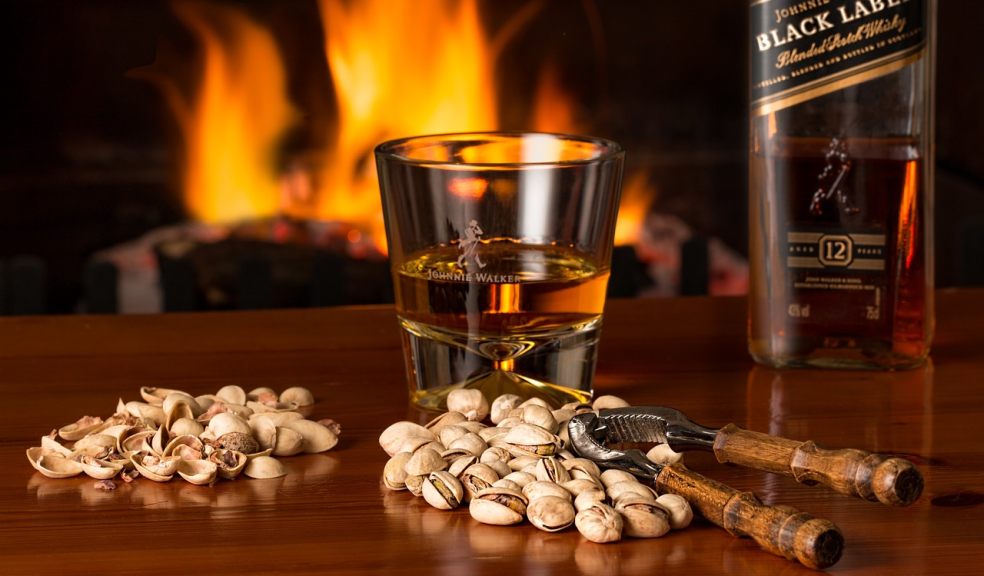
These Alternative Assets Give Up to 10%+ Returns – Are You Missing Out?
What if your next big investment was not in stocks, property, or even cryptocurrency but in whisky casks that are quietly maturing, like hidden treasures waiting to be found?
Investors have concentrated on stocks, bonds, and real estate for years. However, with increasing market uncertainty, savvy investors are looking at alternative assets. These are tangible, unique, and valuable investments that can provide returns of 8-12% while avoiding the volatility of the stock market.
According to Whisky Wealth Club, whisky cask investments had an impressive average return of 12% in 2024. This shows that alternative assets are more than just a niche as they're becoming a strong choice for building wealth.
Consider the potential of whisky barrels, fine wines, farmland, luxury watches, or unique artworks. These physical assets can yield 8-12% yearly returns for those who know how to invest wisely.
Are you missing out? Let's delve in and see how these profitable opportunities might benefit you.
Top Alternative Assets Offering 10%+ Returns
Here are some top alternative assets offering 10% or more returns:
Asset 1: Whisky Cask Investment (8-12% Annually)
Whisky casks appreciate in value as they age, making them a stable long-term investment. As whisky ages, its taste intensifies, increasing the appeal of older casks; especially their cost.
- Demand for premium aged whisky has skyrocketed, especially in Asia and Europe.
- Unlike stocks, whisky casks aren’t affected by daily market volatility.
- Investors can face 8-12% annual returns, positioning it as a profitable long-term investment.
Proven Returns and Stability
The whisky market has experienced consistent price growth over the last ten years, with high-end Scotch casks fetching unprecedented prices at auctions. It's a passive investment, with distilleries managing storage and maturation.
How to Invest?
With whisky casks appreciating in value as they age, investors have seen steady returns of 8-12% annually. As more investors explore tangible assets, platforms like London Cask Traders provide access to premium whisky casks, offering a new way to diversify portfolios.
Asset 2: Fine Wine Investment (8-10% Annually)
Fine wine has historically been a preferred alternative for wealthy investors. The value of rare wines from areas such as Bordeaux, Burgundy, and Napa Valley increases because of the restricted availability and strong demand from collectors.
- Old wines increase in worth as time passes, similar to whisky barrels.
- The worldwide fine wine market has faced steady annual returns of 8-10%.
- Recession-proof: High-quality wines typically maintain their worth even during economic declines.
Historical Performance & Low Volatility
The Liv-Ex Fine Wine 100 Index has exceeded the performance of numerous traditional asset classes over the past 20 years, demonstrating that fine wine is more than a hobby - it’s a lucrative investment.
Although fine wine is renowned for its enduring stability, recent market trends indicate short-term challenges. In 2024, the Liv-ex 100 index fell by 9.2% year-to-date, indicating some fluctuations in the market. However, Italian wines demonstrated greater resilience, facing a price drop of just 6%, in contrast to the 11.1% average decrease in the Liv-ex 1000 index.
How to Invest?
Investors may acquire wine directly from vineyards, through brokers, or via specialised platforms that provide storage and insurance for valuable bottles.
Asset 3: Farmland Investing (10-12% Annually)
As the world population increases, the demand for food production is more significant than ever. This demand is turning farmland into one of the most valuable resources on the planet.
- Agricultural land is a limited asset, indicating that its value keeps rising.
- Over the last few decades, investors have experienced 10-12% annual returns.
- Billionaires like Bill Gates and Warren Buffet are buying agricultural land busily.
Consistent Double-Digit Growth
Investments in the farmland yield profits via the appreciation of land value and rental income. With the rising interest in organic and sustainable farming, investors are seizing this low-risk, high-return potential.
How to Invest?
Investors can purchase farmland directly or invest via REITs concentrated on agriculture and crowdfunding platforms.
Asset 4: Luxury Watches (7-10% Annually)
Luxury watches from brands such as Rolex, Patek Philippe, and Audemars Piguet have emerged as highly lucrative alternative investments in recent years.
- Scarcity creates value: Luxury watch brands manufacture limited digits, causing specific models to be highly desired.
- Consistent annual growth of 7-10%, with occasional rare items increasing in value twofold over time. Studies show that the UK luxury watch market grew by 25% in 2024, fueled by a desire for exclusivity.
- Demand is driven by collectors and investors, particularly in Asia, Europe, and the Middle East.
Real-World Returns
Renowned watches such as the Rolex Daytona and Patek Philippe Nautilus have faced significant rises in value. Investors who purchased these models five years back have experienced returns exceeding those of stocks and gold.
How to Invest?
Investors can purchase new or previously owned luxury watches via auction houses, online platforms, and specialised retailers.
Asset 5: Rare Art Investments (8-12% Annually)
Art is not just for museums; it’s a flourishing asset class that has reliably exceeded the performance of conventional markets. Artworks by famous artists and new talents have experienced major appreciation, transforming fine arts into a valuable and esteemed investment.
- Art helps protect against inflation and often increases in value during economic downturns.
- Extremely wealthy collectors create demand, increasing the value of in-demand items.
- The Artpiece 100 Index has demonstrated an average annual increase of 8-12%, with some pieces selling for millions.
Proven Returns & Long-Term Value
Blue-chip artworks by Warhol, Basquiat, and Picasso have faced rapid price increases, and modern artists are now making their way into the high-value market. Art continues to be a low-correlation asset, indicating it does not fluctuate alongside stocks or real estate.
How to Invest?
Investors can now purchase art directly from galleries, auctions, or platforms offering fractional ownership, increasing accessibility like never before.
Conclusion
The investment world is changing. Traditional ways to make money are no longer the only options. Today, savvy investors are exploring alternative assets like whisky casks, fine wine, abundant farmland, luxury watches, and rare art. These physical investments can protect you from inflation and often provide strong returns, sometimes over 10%.
If wealthy individuals and skilled investors are taking advantage of these opportunities, why shouldn’t you? Alternative assets are not just for the rich; they are accessible and profitable for anyone looking beyond stocks and real estate.
The choice is yours: watch from the sidelines or take control of your financial future. Will you uncover the potential of these hidden treasures? Now is the time to make better investments and build wealth in ways you may not have thought possible.













